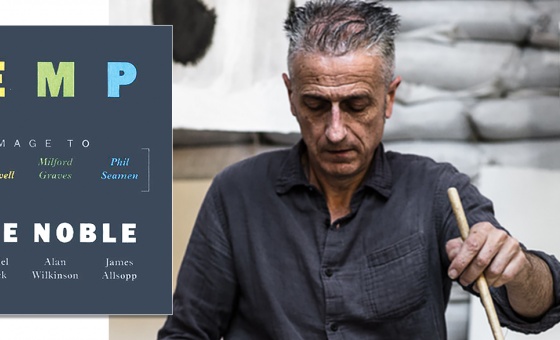This is the last article you can read this month
You can read more article this month
You can read more articles this month
Sorry your limit is up for this month
Reset on:
Please help support the Morning Star by subscribing here
AS WE enter 2019, there is only one number you need to understand the scale of the health and safety crisis engulfing our prisons – 27 per cent.
That is the rise in violence against POA members in England and Wales over the past year – and it follows a 25 per cent increase from the year before.
Officers face record levels of kicking, punching, spitting and biting – plus “potting,” in which excrement and urine are thrown into faces and mouths. This disgraceful and disgusting practise has increased 15-fold since 2010.
There were 9,485 recorded assaults on staff in the 12 months to June 2018 – over one every hour – but even the Ministry of Justice admits the true figure is likely to be much higher.
We are also seeing an increase in violent attacks against female officers, with some gang members seeing it as a badge of honour. Our female members are also being sexually assaulted by some prisoners, which used to be unheard of. It seems there are no boundaries and all our members are fair game.
Slashing officer and support grade numbers by over 7,000 between 2010 and 2013 led to a huge increase in violence – and although the government admits it made a mistake and is now desperately recruiting again, there are still 2,500 fewer officers than before.
New recruits are welcome but it is unfair to expect too much too soon from them. They need experience around them to mentor them in the difficult work they do. At least 70,000 years of officer experience have been lost from the service since 2010, according to research by the Labour Party.
Staff feel less and less protected, which is why the POA has campaigned for synthetic pepper spray Pava, short for pelargonic acid vanillylamide. Prisons Minister Rory Stewart has listened to our concerns and has backed not only a pilot of Pava but its roll-out as well.
I have always been clear that I will criticise politicians when they get it wrong, irrespective of political party, but equally praise them when they get it right. The minister has got this one right and the POA fully supports him in introducing Pava – not just to protect our members but also the prisoners in our care.
Currently, officers only have extendible batons to protect themselves from attack, but batons can break bones – or worse – even if deployed correctly against an out-of-control prisoner.
Pava is an incapacitant and of course can cause pain for up to half an hour, but it leaves no lasting damage. The public accepts that police officers are issued it as standard and I am sure they will also accept that prison officers should be properly equipped to protect themselves at work.
The government ran a six-month pilot in four prisons – HMPs Hull, Preston, Risley and Wealstun – with positive results. The official evaluation report pointed out that “a significant proportion of prisoners and the majority of staff expressed the view that Pava was necessary.”
In October, Stewart announced that Pava would be rolled out to all public adult male jails from the start of this year.
But the Equality and Human Rights Commission (EHRC) immediately warned that “making Pava spray available to every prison officer increases the risk that it might be used inappropriately” – another way of saying that officers cannot be trusted with new powers, which the POA completely rejects.
This is disappointing from the EHRC because officers deserve better support than this, especially from the UK’s official human rights watchdog. Our members have human rights too – including the right to proper health and safety conditions at work and protection against violence.
When POA members lost their basic human right to take industrial action under section 127 of the Criminal Justice Public Order Act 1994, the ECHR was conspicuous by its absence – and indeed failed to comment more recently when the government won a permanent injunction in the High Court to try to prevent the POA from taking effective action to protect the health and safety of its members.
The Prison Reform Trust (PRT) has also tried to derail the roll-out, declaring Pava is “likely to do more harm than good and undermine the safety of prisoners and prison officers.”
Incredibly, the charity seems to be accusing officers of pushing a policy that puts their own security at risk.
During the pilot, officers drew Pava on 50 occasions – actually spraying it 33 times. Official data shows there were 562 recorded assaults at the four prisons during the same time period, which means the spray was drawn less than 10 per cent of the time.
And although the evaluation report said the pilot “was unable to conclusively demonstrate that Pava had any direct impact on levels of prison violence,” it’s important to remember that staffing cuts took months to translate into increased violence – and it’s logical to suppose there will be a similar time lag before Pava has a significant effect.
The report gives a brief description of each occasion Pava was deployed – “case studies” based on statements from staff and prisoners.
From these case studies, the PRT claimed that officers used Pava correctly on just 18 occasions. The other 32 incidents were either unsafe, had available alternatives or were not appropriately justified.
But how is the PRT making these judgements? First, the charity assumes that three or more officers are always enough to incapacitate a prisoner without Pava.
A good example of this is case study 11, where the report states: “The prisoner was trained in martial arts and ended up putting prison officer A on the floor and punched him several times in the face.”
Despite more officers attempting to assist, “there was little success in gaining compliancy from the prisoner” and so, “as a result, prison officer B decided to draw and deploy Pava.”
This would seem to be a textbook example of the spray’s correct use, but for the PRT it was unnecessary because more than two officers were present – taking no account of the prisoner’s martial arts training.
Now take case study 41, in which a prisoner “became extremely irate and attempted to assault” an officer, before another officer “drew and deployed Pava after giving a clear warning.”
Because the prisoner managed to use the first officer “to block the spray,” the PRT judged this intervention not to be in line with instructions. But the prisoner still felt the primary effects of the spray and was “then restrained and placed in cuffs.”
The PRT agrees the use of Pava was justified here, but still marked it as illegitimate because it apparently had the “opposite of [the] impact sought.”
As a final example of missing the point entirely, take case study 7 – one of two uses of Pava to stop self-harm.
A prisoner had previously made “superficial cuts” to himself, before “he began to self-harm again.” Then “once healthcare had left the scene, the prisoner proceeded to cut deeper and deeper.”
An officer entered the cell and told the prisoner to stop. He refused and so the officer drew her Pava, at which point the prisoner dropped the blade.
The PRT objects to the officer threatening to use Pava, but it’s a good example of the “Velcro effect” – using the threat of force to de-escalate a dangerous situation.
Interestingly, the officer in question “stated that she would not have drawn her baton in this incident but was inclined to draw Pava,” according to the report. This makes sense if you realise that, unlike a baton, Pava is an incapacitant – it is designed to stop a prisoner in their tracks.
A baton attack with a loose blade could well have made things worse, yet even the report authors raise concerns about this kind of intervention.
And that is the problem. Superficially, you might think threatening a self-harming prisoner with Pava is unreasonable – but direct action like this is more likely to prevent serious harm to the prisoner than waving a baton around.
The officer’s quick thinking prevented further self-harm – or indeed something far worse. Her judgement was wholly justified.
It is all very well judging officers’ actions from the comfort of an office, but my members are dealing with life or death situations every day and have to make countless judgements on the spot – and do so very effectively.
If the PRT or EHRC still do not understand why prison officers need Pava now, they should spend time walking in the shoes of my members and experience the violence they face on a daily basis before lecturing them about what tools they need to be safe at work.
In an ideal world, there would be no need for Pava in our prisons – but I live in the real world where my members don’t know if they are going home in one piece or not to their loved ones.
Not many occupations carry that threat – and all reasonable-minded members of the public understand that prison officers, along with those in our care, must be protected.
While Pava isn’t the answer to the prisons crisis, it is a step in the right direction to deter and prevent violence – not just against officers but prisoners as well.
The POA is calling for solidarity from across the trade union movement with our demands for proper protective equipment so that our members can carry out the vital role of rehabilitating those in our care in a safe and decent environment.
Steve Gillan is general secretary of the POA.








